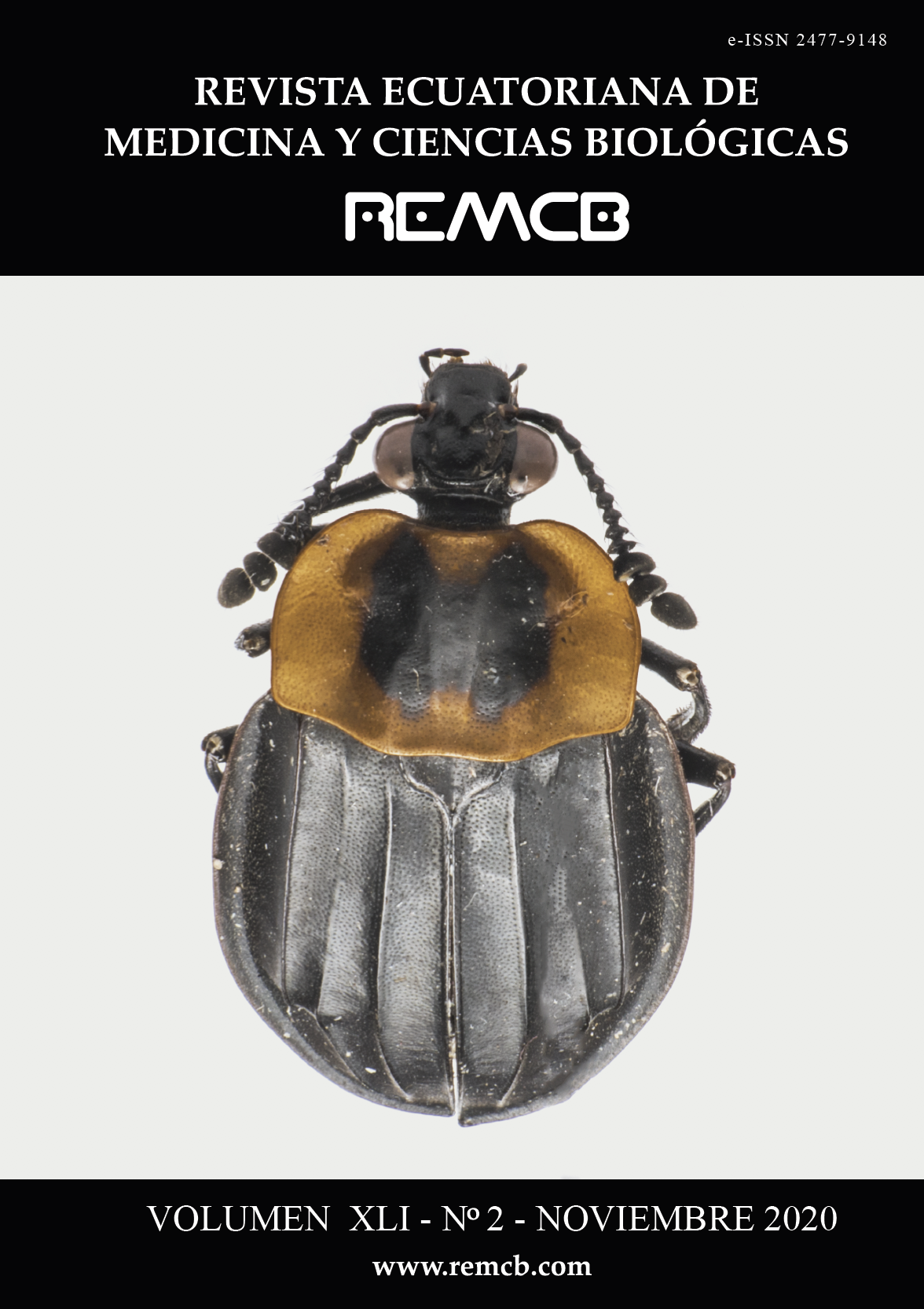Cambios en las frecuencias de inversiones cromosómicas en poblaciones experimentales de Drosophila pseudoobscura
Contenido principal del artículo
Resumen
Se determinaron las fluctuaciones temporales en cuatro poblaciones experimentales de Drosophila pseudoobscura; a partir de cromosomas politénicos se determinaron los genotipos y frecuencias relativas durante 4-6 muestreos mensuales Poblaciones de ésta especie muestran 2-3 inversiones principales con frecuencias conjuntas del 90% del total y de 4-7 secundarias que completan la muestra. Los cambios se presentan fundamentalmente en los componentes principales, provocando oscilaciones a través del tiempo. Se obtuvieron los cambios siguientes: población Tulancingo, la inversión TL (Tree Line) pasa de 54 a 70% y su contraparte CU (Cuernavaca) de 34 a 17%. Población Zirahuén, SC (Santa Cruz) de 34 a 36%, TL de 25 a 30% y CU de 23 a 5% y de los secundarios OA (Oaxaca) de 10 a 5% y EP (Estes Park) de 3 a 12%. Población Xochimilco CU de 51 a 16%, TL de 33 a 44%, EP de 8 a 10% con un máximo intermedio de 17% y OL (Olympic) de 1 a 18%. Población Nevado de Colima SC de 65 a 45% con oscilación máxima de 74%, TL de 20 a 29% y un mínimo de 16%, OL de 5 a 17%. En general en las cuatro poblaciones el resto de las inversiones secundarias fluctuaron en promedio dos por ciento.
Descargas
Detalles del artículo
Citas
Anderson WW, Dobzhansky Th, Pavlovsky O. 1972. A natural population of Drosophila transferred to laboratory environment. Heredity 25: 101-107.
Balanyá J, Huey R.B, Gilchrist GW, Serra L. 2009. The chromosomal polymorphism of Drosophila subobscura: a micro-evolutionary weapon to monitory global change. Heredity 103: 364-367.
Dobzhansky Th. 1947. Adaptive changes induced by natural selection in wild populations of Drosophila. Evolution 1 (1 y 2): 1-16.
Dobzhansky Th. 1949. Observations and experiments on natural selection in Drosophila. Proceedings of the Eighth Inter. Congress of Genetics, Hereditas, Suppl.: 210-224.
Dobzhansky Th. 1961. On the dynamics of chromosomal polymorphism in Drosophila. En J. S. Kennedy (ed.) Insect Polymorphism. Royal Entomological Society. 30-42. London.
Dobzhansky Th. and Epling C. 1944. Contribution to the genetics, taxonomy and ecology of Drosophila pseudoobscura and its relatives. Carnegie Institution of Washington, Publication 554, 183p.
Frutos R. 1978. Changes of chromosomal polymorphism in experimental cage populations of Drosophila subobscura. Genetica 49 (2 y 3): 139-151.
Inoue Y. 1979. The fate of polymorphic inversions of Drosophila melanogaster transfered to laboratory conditions. Japan. J. Genet. 54 (2) : 83-96.
Kapun M, Schalkwyk HV, McAllister B, Flatt T, Schlottener C. 2004. Inference of chromosomal inversion dynamics from Pool-seq data in natural and experimental laboratory populations of Drosophila melanogaster. Mol. Ecol. 23: 1813-1827.
Olvera O, Powell JR, de la Rosa ME, Salceda VM, Gaso MI, Guzmán J, Anderson WW y Levine L. 1978. Population genetics of Mexican Drosophila. VI. Cytogenetics aspects of the inversion polymorphism in Drosophila pseudoobscura. Evolution 33: 381-395.
Powell JR. 1992. Inversion polymorphism in Drosophila pseudoobscura and Drosophila persimilis. En: Krimbas CB and Powell JR (eds.) Drosophila Inversión Polymorphism 73-126. CRC Press, Boca Raton, Ann Harbor, London, Tokyo.
Salceda VM, Guzmán J, de la Rosa ME and Olvera O. 2015. Four decades of inversion polymorphism in Drosophila pseudoobscura from Mexico. Genetika 47 (3): 959-966. (Serbia).
Santos M, Céspedes W, Balanyá J, Trotta V, Calboli F.C. F, Fontdevila A. and Serra L. 2004. Temperature related genetic changes in laboratory populations of Drosophila subobscura :evidence against simple climatic-based explanations for latitudinal clines. Am- Nat. 165 :258-273.
Schaeffer SW. 2008. Selection in heterogeneous environments mantains the gene arrangements polymorphism in Drosophila psedoobscura. Evolution 62: 3082-3099,
Solé, E, Balanyá J, Sperlich D, Serra L. 2002. Long-term changes in the chromosomal inversion polymorphism of Drosophila subobscura. I . Mediterranean populations from southern Europe. Evolution 56 (4) : 830-835.
Singh BN. 1982. Persistence of chromosomal polymorphism in various strains of Drosophila ananassae. Genetica 59 (2): 151-156.
Singh P and Singh BN. 2008. Population genetics of Drosophila ananassae: variants in the degree of genetic divergence in populations transferred to laboratory conditions. Zoological Studies 47 (6): 1-20.
Singh BN and Banerjee R. 2009. Increase of the degree of inversion polymorphism in Drosophila bipunctata populations transferred to laboratory conditions. J. Zoological Systematic and Evolutionary Research 35 (4) 153-157.
Spiess EB. 1966. Chromosomal fitness in experimental populations of Drosophila persimilis from the timberline of Sierra Nevada. Evolution 20: 82-91.
Watanabe T, Anderson WW, Dobzhansky Th, Pavlovsky O. 1970. Selection in experimental populations of Drodophila pseudoobscura with different initial frequency of chromosomal variants. Genetic Research 15 (1):123-129.





